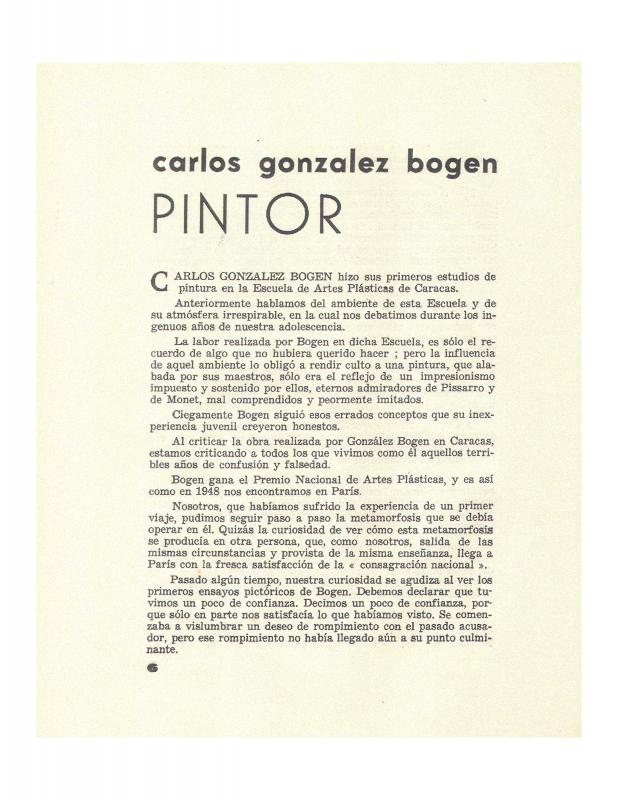Los Disidentes was a group founded in Paris in 1950 by a number of Venezuelan artists and writers that lived in that city between 1945 and 1952. Based in the French capital, they fought against the official education imparted at the Escuela de Artes Plásticas de Caracas, whose foundations were in landscape painting and nativism. True to their name, Los Disidentes tried to achieve a renewal of traditional and academic art through the assimilation of the values of European abstraction. The painters of that group included Pascual Navarro (1923–85), who wrote this text [see also doc. no. 813952], Mateo Manaure [doc. no. 813583], Alejandro Otero [doc. no. 813625 and doc. no. 813611], Luis Guevarra Moreno, Carlos González Bogen [doc. no. 813695 and doc. no. 813667], Narciso Debourg [doc. no. 813597], Perán Erminy [doc. no. 813463], Rubén Núñez, Dora Hersen, and Aimée Battistini, as well as the then student of philosophy J. R. Guillent Pérez [doc. no. 813478 and doc. no. 813723]. Other national artists who later joined their ranks include Armando Barrios, Miguel Arroyo, Oswaldo Vigas, Omar Carreño, Alirio Oramas and Régulo Pérez. They published five issues of an eponymous magazine, Los Disidentes, which served as the chief conduit for disseminating their ideas.
This article by Pascual Navarro speaks to the controversy that arose in 1949 when Alejandro Otero presented his series Las Cafeteras in Caracas, which introduced abstraction in Venezuela. Several artists reacted to the series; among them, Pedro León Castro, who launched a series of accusations, mostly of a moral nature, against the young Venezuelan artists who had then been based in Paris since the mid-1940s. Otero had already responded with his article “Cómo trabajamos los pintores venezolanos en París” (El Nacional, July 17, 1949), which spurred Castro to write another article, “De frente a la realidad: el balance justo de la verdad” (El Nacional, July 31, 1949), which was written in response to Otero. Navarro had intended to publish “Anacronismo e irresponsabilidad” in El Nacional in Caracas. For unknown reasons, it appeared “with a few months’ delay,” in Paris in the second edition of Los Disidentes magazine, according to the author.
This text is indicative of how the accusations and concepts of the realist painter Pedro León Castro had lasting impact on the young Venezuelan artists who were then living in Paris, and of how the controversy surrounding Otero’s series Las Cafeteras also generated divisions. There is, to be sure, early criticism of Los Disidentes; and while Navarro’s style is respectful, Castro’s is offensive and judgmental.










